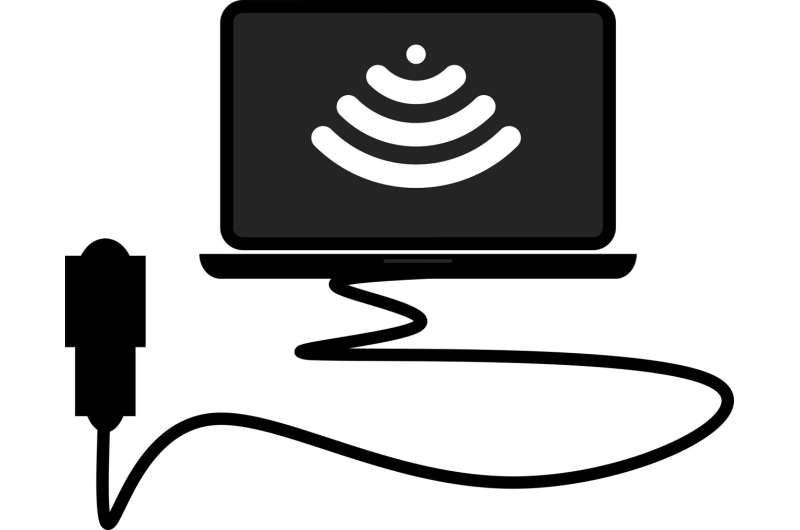This article has been reviewed according to Science X's editorial process and policies. Editors have highlighted the following attributes while ensuring the content's credibility:
fact-checked
proofread
Point-of-care ultrasonography offers clear benefits, multiple applications in critical care

Recent advances in ultrasonography technology have led to increased usage at the point-of-care, with handheld devices offering both diagnostic and therapeutic applications.
Point-of-care ultrasonography (POCUS) has proven to be an effective tool for a variety of medical and surgical conditions, including those experienced by patients who are critically ill. Among its numerous benefits, it can be performed quickly and cost effectively without transporting the patient, uses no radiation, and is easily reproducible and noninvasive. POCUS can be performed at the patient's bedside as clinical questions arise and be rapidly repeated as a clinical situation mandates.
The article, "Point-of-Care Ultrasonography in the Critical Care Setting: Abdominal POCUS," describes a number of applications for POCUS in abdominal imaging, including the biliary tract, liver, kidneys, bladder and appendix, as well as intra-abdominal free fluid. For each one, the article covers indications, relevant anatomy and physiology, clinical pitfalls, scanning techniques and documentation of findings. It is published in AACN Advanced Critical Care.
The authors are Bryan Boling, DNP, AGACNP-BC, and Abbye Solis, DNP, ACNP-BC. Boling is a nurse practitioner in the anesthesiology department, division of critical care medicine at the University of Kentucky, Lexington. Solis is a nurse practitioner in the Weinberg Surgical ICU, Johns Hopkins Hospital, Baltimore. They are both adjunct faculty in the adult-gerontology acute care nurse practitioner program at Georgetown University, Washington, D.C.
"The most-known application of abdominal POCUS is to quickly assess the trauma patient for occult intra-abdominal injury, but it can also help clinicians evaluate the function of several abdominal organs that may fail during critical illness and contribute to morbidity and mortality," Boling said. "POCUS is redefining how illness and injuries are diagnosed and treated, and its growth and expansion will only continue."
The article is one of several published in the journal's summer and fall 2023 issues about the different applications of POCUS in the ICU. Other articles in the two-part symposia address:
- Critical care echocardiography
- Focused and extended focus assessment with sonography for trauma
- POCUS for obstetric patients in the ICU
- Pulmonary POCUS
- Ultrasonography-guided procedures in the ICU, including needle and catheter placement
- Ultrasonography for soft and skin tissue infections, noninfectious cysts, foreign bodies and burns
More information: Bryan Boling et al, Point-of-Care Ultrasonography in the Critical Care Setting: Abdominal POCUS, AACN Advanced Critical Care (2023). DOI: 10.4037/aacnacc2023298





















